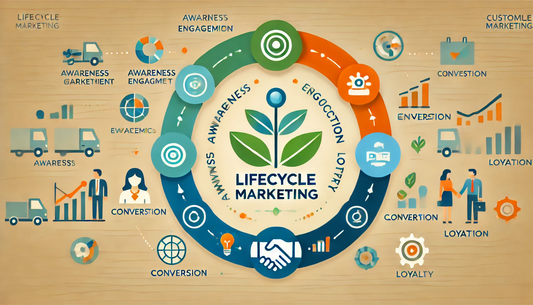In early 2020, Zoom was just another video conferencing tool. By the end of the year, it had become a household name, a verb, and a lifeline for millions of people around the world. 🚀 What turned this humble app into a global powerhouse? It wasn’t just luck—it was a combination of strategic growth, adaptability, and a customer-first mentality. 🧑💻
For startup founders, Zoom’s success story offers a wealth of lessons on how to grow rapidly, adapt to market needs, and build a product that people can’t live without.
Let’s explore the strategies behind Zoom’s rise to the top and see how your startup can implement similar approaches to achieve explosive growth. 🚀
Timing is Everything, But Preparation is Key
When the pandemic hit in 2020, Zoom was in the perfect position to meet the surge in demand. But its success didn’t happen overnight. 🚪📈 The company had been working on creating a robust, scalable product for years.
This early preparation allowed it to scale quickly without major service interruptions, making it a reliable option for millions of new users.
Actionable Takeaway: For startups, preparing for scalability from day one is essential. Don’t wait until you face a growth surge—build your infrastructure with growth in mind. The foundation you lay today will determine how well you can handle tomorrow’s success. 🏗️
Focus Relentlessly on User Experience
Zoom’s interface was incredibly simple, intuitive, and user-friendly. 🎯 This focus on user experience became a major differentiator, especially as millions of non-tech-savvy users started flocking to the platform.
With minimal friction and an easy-to-navigate layout, users could jump straight into their video calls without feeling overwhelmed.
Actionable Takeaway: Never underestimate the power of a great user experience. Ensure your product is easy to use for anyone, from first-time users to seasoned professionals. If your product is intuitive and straightforward, it will keep people coming back. 🙌
Free Access as a Gateway
One of the key factors in Zoom’s success was its free plan. With generous features compared to its competitors, it allowed users to experience all the core benefits of Zoom without any commitment. Once users were hooked, many upgraded to paid plans for additional features and functionalities. 💸
Actionable Takeaway: Consider offering a free tier or trial to attract users. Free access lowers the barrier to entry and lets people experience the value of your product first-hand. This strategy helps convert them into loyal paying customers. 🎉
Prioritize Security and Trust
With millions of users relying on it for both personal and professional communication, Zoom faced a massive challenge: security. The infamous “Zoombombing” incidents brought its security flaws into the spotlight.
But instead of shying away, Zoom took action quickly by introducing new security features and being transparent about the steps it was taking. 👨💻
Actionable Takeaway: Security isn’t something you should address later—it must be a priority from the start. If your product deals with user data, be proactive in addressing potential vulnerabilities. Communicate openly and honestly with your users to maintain trust and transparency. 💬
Leverage Viral Growth Channels
Zoom didn’t spend big bucks on advertising. Instead, its explosive growth was fueled by word-of-mouth and organic adoption. 🗣️ People recommended Zoom to friends, colleagues, and even family, which led to a viral growth loop.
Educational institutions, businesses, and individuals were all using Zoom and sharing their positive experiences.
Actionable Takeaway: Create a product that people love so much that they want to share it. Build user-generated content and encourage referrals. The best marketing tool is a great product that does its job well, and users will do the rest. 📲
Adapt Quickly to Market Needs
As the pandemic rapidly evolved, so did Zoom. The company quickly rolled out new features like virtual backgrounds, enhanced security options, and integrations with other popular tools like Google Calendar and Slack. 🛠️ This adaptability helped Zoom stay ahead of the competition and continue meeting users’ shifting needs.
Actionable Takeaway: Stay close to your customers and constantly adapt based on their feedback. Being flexible and responsive to market changes is key to sustained growth. 💡
Invest in Brand and Community Building
Zoom didn’t just focus on selling a product—it focused on building a community. 🌍 They hosted virtual events, provided resources for remote work, and helped businesses, schools, and families transition into the new normal. This proactive engagement made Zoom not just a tool but a partner in people’s lives.
Actionable Takeaway: Build a community around your product. Engage with users beyond just transactions and create content that resonates with them. The deeper the emotional connection, the stronger the loyalty. ❤️
Scale Customer Support
As millions of new users flocked to Zoom, the company had to quickly scale its customer support system to meet the demand. 🧑💼 They added more resources, support channels, and automation to ensure that users could easily get the help they needed.
Zoom’s ability to provide excellent support during a time of rapid growth helped them maintain user satisfaction.
Actionable Takeaway: Customer support should scale alongside your product. Make sure you have systems in place that can handle growth without sacrificing quality. Invest in support tools and resources to ensure your users are always happy. 📞
Partner for Ecosystem Growth
Zoom understood that its success was not only about building a great app—it was about creating an ecosystem. Zoom integrated seamlessly with other tools like Slack, Microsoft Teams, and Google Calendar, making it easier for users to incorporate it into their existing workflows. 🤝
This interoperability made Zoom an indispensable part of everyday operations.
Actionable Takeaway: Look for strategic partnerships that can help you grow your user base and enhance your product. Collaboration with other platforms or services can create a more comprehensive user experience and increase stickiness. 🔗
Double Down on Core Strengths
Throughout its rise, Zoom remained focused on its core strength: video communication. 📹 Despite the temptation to diversify or expand too quickly, Zoom stayed true to its niche, refining its video conferencing service and making it the best in the market.
This focus helped Zoom dominate the space and become synonymous with video meetings.
Actionable Takeaway: Know your core strengths and focus on them. While diversification can be tempting, mastering a specific niche will help you stand out. Don’t try to do everything—do one thing exceptionally well. 🏅
Final Thoughts: Building a Startup Like Zoom
Zoom’s explosive growth wasn’t a stroke of luck—it was a combination of preparation, focus, and adaptability. By staying customer-centric, constantly innovating, and building a strong community, Zoom turned a basic video conferencing tool into a household name. 🌍
For startup founders, the lessons from Zoom are clear: focus on solving a real problem, create a seamless user experience, leverage word-of-mouth, and keep innovating to stay relevant. 🌱
If you build a product that truly serves the needs of your audience and stays flexible to market changes, you’ll be well on your way to creating a brand that people love and trust. 🚀
Zoom’s story isn’t just about growth—it’s about adaptability, creating value, and building a loyal community. Apply these strategies to your startup, and you’ll see how fast you can grow when you keep the customer at the heart of everything you do. 💥










